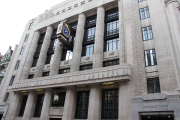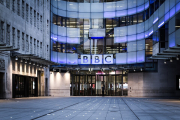
Photo by the handbook
As I recline on the gold-threaded silk cushions, nibbling on satay sticks, the sound of the mandolin ringing through my ears, silk-dressed geisha’s at my beck & call, it strikes me how small the world has become. I order a bottle of Tiger and reflect on my recent travels. I sit not in some high-class opium den in the mid-Orient, though. This is Soho, London at the aptly named Opium.
It could equally be Hakkisan, Bam-Bou, Chinawite or any number of Chinese, Vietnamese, Malay style members’ bars, which seem to dominate our streets this year. Perhaps it’s the British weather combined with airline price wars, global accessibility through the web coupled with Britain’s ever growing cultural mix—or perhaps it is just pure boredom with 'Cool Britannia’. Whatever the reasons, the fact is there is a growing desire to go and discover new lands away from the sewage swamped shores of the Med where local culture is washed away in a sea of Sun newspapers, English caf’s and pints of cheap Lager.
The World Tourism Organisation expects the number of international visitors to South East Asia to double by 2010 to almost 200 million, an increase no doubt in part due to the above as well as the growth and importance of the 'Tiger’ economies in the global financial arena. Our travel and discovery have made us not only comfortable with foreign cultures, but we positively revel in them and yearn to be a part of them. Cameron Amos, Manager of So.Uk, one of Clapham’s latest editions opines that 'The whole gap-year Asia trail thing has played a big part in the continent’s influence today. Those round-the-world escapades inevitably focus on the Far East – Thailand, Cambodia, Vietnam, Singapore – and bars are catering for the desire to relive that experience back at home.’ Claude Challe is a name that has been whispered for many years as an innovator in the bar world. His sublime Parisian masterpiece,
The Buddha Bar, brought to life by the artistic direction of renowned designer Miguel Cancio Martins, was one of the first venues in the West to take the fundaments of Eastern culture and shape them into an utterly exclusive nightspot. It itself was inspired by Challe’s Far Eastern travel experiences and the storming success of the Buddha Bar was a catalyst that prompted a whole new way of thinking, a broad-mindedness, which has given rise to a thousand translations including most of the aforementioned London bars.
The trend throws us to the other end of the design pendulum, far away from the post-modern industrial minimalism of the nineties – an era which welcomed the raw, simple lines of AKA, the bright capaciousness of Bluebird and Mezzo and comfort in the simplicity of New York style lounge bars such as 10 Room and The Player. New York has been done, redone, overdone; Eastern Europe is history and that Latin thing is for the Ricky Martin worshipping, leather-trouser-splitting mainstreamers. Today, the place to be is the Far East. 'It’s something of a backlash against the bright, simplicity, which was popular a few years ago,’ explains Eric Yu, Managing Director of Opium. "In every industry you need to innovate and progress, constantly push forward. The London scene was crying out for something special and stimulating. What Far Eastern culture offers is just that; intricate & complex designs, tastes, aromas, depth of tradition and history – and incomparable importance placed on quality." Bar owners are inherently well travelled folk, the inspiration of new cultural discoveries prompting them to bring that experience back home to share. The old saying 'if I could bottle that, I’d make a fortune’ is one, which bar entrepreneurs live by and Hong Kong, Singapore, Tokyo, Ho Chi Minh, Bangkok all offer an abundance of architectural and culinary character to 'bottle’ and feed to London’s hungry bar community. 'I have been travelling to the Far East twice a year for 7 years now’ says Justin Cooper of Hoxton’s Bluu Bar. 'There’s just something about its style and sophistication that you can’t find anywhere else in the world. It’s the combination of tradition, realism and pure respect for life and nature that stands it apart from other continents. The colours, the smells, the attention to detail – you just can’t beat it’.
The popularity of all things Asian has contributed in a big way to the success of beers such as Tiger, which has grown relentlessly from an unknown product just a few years ago to almost ubiquitous status today. And the change in the role of gastronomy in this country has guaranteed the success of oriental cuisine as it lends itself perfectly to the modern eating format within our current bar environment. Food plays a significant role now, a million miles away from the pie & mash menus of our pub ancestors. Just as people want good drinks, so too they expect good cuisine, but in a relaxed utensil free fashion. Tiger prawns, satay sticks, dim sum and sushi offer this, where fish fingers, boiled veg and bangers & mash do not. At the same time, it caters naturally to the growing need for fish & vegetarian based menus in our increasingly health-conscious, moralistic world.
The Far Eastern thing is creeping further and further into the body of bar culture and is even visible to varying degrees in dozens of otherwise un-Far Eastern venues. In design features such as the blessed golden Buddhas at The Blag Club and So.Uk or the opulent basement of Cicada – or the well executed East-West fusion of Jim Thompson’s, where modern polished surfaces contrast with genuine Far Eastern artistry and a vast array of Indo-Viet-Bumese dishes. It is not only London that is enjoying this taste of the exotic. All around the country from Sumo in Brighton to Edinburgh’s Bam Bou and ultra-trendy Mosquito in Liverpool, bars are proving that multiculturalism, innovation, experimentation and Asian cool as a whole are entirely national phenomena.
It is not unrealistic to assert that London is more Eastern than anywhere else outside of the Far East itself. You could smuggle someone over from Singapore at night, take them to a dozen bars, a good restaurant and finish off at a top club and I’d gamble they wouldn’t guess for a minute they were in the UK. Amidst tabloid news reports of race related violence, increasing nationalism and marketeers’ calls to "buy British", it is at least refreshing to find around the country a whole world of other cultural experiences and to watch the people who count loving it and crying out for more.
Jeremy Mascarenhas has been editorial director of the seminal London Bar Guide magazine http://www.londonbarguide.com for 10 years.







































